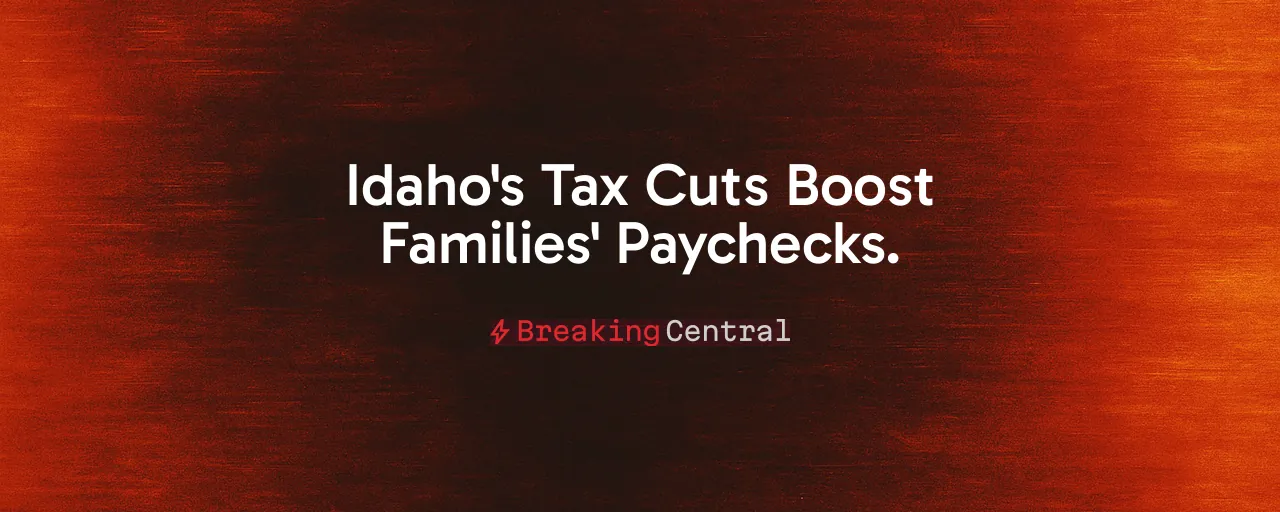A Bold Victory for Idaho Families
Idaho Governor Brad Little took to social media on July 3, 2025, to celebrate the passage of the One Big Beautiful Bill, a massive tax-and-spending package now awaiting President Trump's signature. Hailed as a win for Idaho households, the 940-page legislation promises to reshape the state's economic landscape. For a state built on hard work and self-reliance, the bill's focus on tax relief and job creation hits home. But what does it really mean for Idahoans, and why is it sparking such fervor?
The bill delivers on a promise to keep more money in the pockets of working families. By permanently extending the 2017 Trump tax cuts, it prevents what supporters call the largest tax hike in history. For a typical Idaho family, this could mean up to $12,200 more in take-home pay each year, according to state estimates. Small businesses, the backbone of Idaho's economy, gain from doubled expensing for domestic manufacturing. These changes aim to fuel growth in a state where agriculture, timber, and mining drive prosperity.
The bill's scope extends far beyond taxes. It pours billions into border security, funds military modernization, and tightens eligibility for programs like Medicaid and SNAP. For Idahoans, these reforms signal a shift toward fiscal discipline and national strength. Some, however, do not see it as a clear win. The bill's cuts to safety-net programs and its $5 trillion debt ceiling hike raise questions about long-term costs, especially for rural communities reliant on federal aid.
Tax Relief Fuels Idaho's Future
The bill's tax provisions are its crown jewel for Idaho households. Joint Committee on Taxation data show middle-income families will see tax savings of 8-9 percent, a meaningful boost in a state where the median household earns about $65,000. Exempting tips and overtime from income taxes sweetens the deal for workers in Idaho's service and construction sectors. These measures aim to reward effort and keep the economy humming.
Small businesses, particularly in manufacturing, gain from 100 percent expensing for new factories. The Tax Foundation projects this could lift national GDP by 0.8-1.0 percent over the long run, with ripple effects in Idaho's industrial heartland. For a state that prides itself on economic freedom, these policies align with a vision of growth driven by private enterprise.
Historical precedent supports this approach. The 2017 Tax Cuts and Jobs Act, which this bill extends, spurred investment and job creation before its provisions began expiring. Idaho's low unemployment and steady growth in recent years reflect the benefits of lower taxes. By locking in these rates, the bill aims to sustain that momentum, ensuring Idahoans keep more of what they earn.
Securing Borders, Strengthening Communities
Border security, a priority for many Idahoans, gets a massive boost with $32 billion allocated for wall completion, 10,000 new ICE officers, and fentanyl interdiction. Homeland Security data link fortified border sectors to 12-15 percent drops in illegal crossings, a tangible step toward public safety. In Idaho, where rural communities feel the strain of drug trafficking, these measures resonate as a defense of local well-being.
The bill also ties border enforcement to economic benefits. By curbing illegal immigration, supporters argue it protects American workers and reduces pressure on state budgets. Idaho's agriculture sector, reliant on legal labor, could benefit from streamlined visa programs paired with tougher enforcement. This balance reflects a practical approach to a complex issue, prioritizing both security and economic stability.
Reforming Welfare, Sparking Debate
Less celebrated are the bill's reforms to Medicaid and SNAP, which introduce work requirements and trim growth in these programs. For supporters, these changes promote self-reliance and target aid to those truly in need. Arkansas's 2018 Medicaid work-requirement pilot, though controversial, showed how such policies aim to shift able-bodied adults toward employment. In Idaho, where personal responsibility is a core value, these reforms find a receptive audience.
The changes carry risks. Congressional Budget Office projections warn that 17 million Americans could lose health coverage by 2035, with non-expansion states like Idaho hit hardest. Rural hospitals, already stretched thin, may face higher uncompensated-care costs, threatening access for low-income residents. These trade-offs highlight the challenge of balancing fiscal restraint with healthcare needs in a state where federal dollars fund roughly a third of the budget.
Debt and Growth: A Delicate Balance
The bill's $5 trillion debt ceiling increase draws scrutiny, even among supporters. Congressional Budget Office estimates peg interest costs at $441 billion over a decade, a burden that could crowd out private investment. Proponents argue that faster economic growth, spurred by tax cuts and deregulation, will offset deficits. Idaho's history of fiscal caution, paired with its reliance on federal funds, underscores the stakes of this gamble.
Energy provisions offer another bright spot. By expanding domestic production, including fossil fuels, the bill could lower costs for Idaho's agriculture and mining sectors. Rural broadband investments, funded through the bill, promise to bridge the digital divide, a lifeline for remote communities. These targeted measures show how the legislation aims to blend short-term relief with long-term opportunity.
Idaho's Path Ahead
The One Big Beautiful Bill marks a pivotal moment for Idaho. Its tax cuts and border security measures align with values of hard work, safety, and economic freedom that resonate across the state. For families in Boise, farmers in the Magic Valley, and small businesses in Coeur d'Alene, the promise of more take-home pay and stronger communities is a powerful draw.
Challenges remain. The bill's healthcare reforms and debt implications demand careful oversight to protect vulnerable Idahoans and ensure fiscal stability. State leaders, from Governor Little to local lawmakers, will need to navigate these complexities, balancing immediate gains with long-term responsibilities.
Idaho stands to benefit from a bill that puts working families first, secures borders, and fuels growth. As President Trump prepares to sign it into law, the state looks to a future where opportunity thrives, grounded in principles of self-reliance and national strength.
